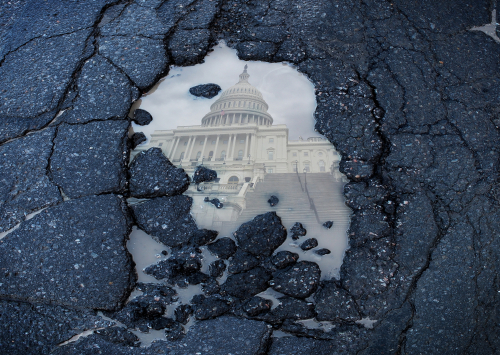
With Congress and the president only funding surface transportation through September 2021, the Competitive Enterprise Institute (CEI) has issued a report urging Congress to reform how surface transportation is funded.
The CEI report highlights the shortfall within the Highway Trust Fund and a mismatch between who pays for roads and who uses them. While Congress is expected to tackle the funding issue starting in January, a new way of thinking about infrastructure funding needs to occur on the Hill, the report said.
“Currently in the United States, 7 percent of bridges are structurally deficient, and 19 percent of major highway pavements have deteriorated. Yet, our existing financing structure has few tools to address the looming reconstruction challenges facing existing infrastructure,” the report said. “Meanwhile, the last large surge of federal “stimulus”-backed repair funding from the American Recovery and Reinvestment Act of 2009 largely went to simple pavement surface mill-and-fill projects that will soon need to be replaced from the ground up. Congress needs to address the inadequacy of existing legacy programs and answer the question of how to support economic growth while conserving existing infrastructure.”
The report looks at the U.S. Interstate Highway System’s long-run average cost, using 60 years of financial records. Additionally, the report details the gap between cost and revenue, leading to a system that is becoming unreliable and deficient. The report also explores how some projects could be throttled by rural intercity travel and urban commuting and suggests there may be a middle ground between general fund spending and nationwide tolling in an atmosphere of “the expectation of ongoing public subsidy.”
CEI recommends that policy-makers work to “return to a marketplace that values incremental infrastructure improvements, respects local governance, balances rural and urban access…, and enables personal wealth creation while fixing the trust fund cliff,” by normalizing infrastructure investment to find a missing financial metric that measure per intercity traveled person-mile and freight container mile, and adjusting economic models for vehicle time saved used to select projects to conform to actual consumer time-utility values that support marketplace rates.